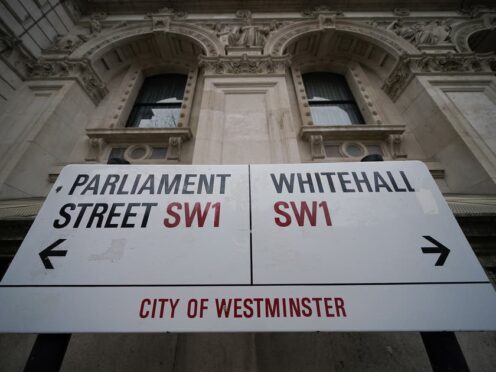
Artificial intelligence could save the taxpayer billions and transform public services, but the Government lacks a coherent plan to adopt it in the public sector, the National Audit Office has said.
In a report on the Government’s use of AI, the NAO found that while 70% of Whitehall departments were exploring opportunities to use the new technology, a lack of skills remained a significant barrier.
The watchdog said pay levels were too low to attract the workers required for the scale of transformation the UK needs, pointing to the fact there were 4,000 digital, data and technology vacancies in Government by October 2022.
Contractors and agency workers can make up for this shortfall, but come at a greater cost and reduce the Government’s ability to develop its own capabilities.
It also found the lack of a single body with clear responsibility for implementing AI in the public sector presented a risk to value for money.
Both the Cabinet Office and the Department for Science, Innovation and Technology share responsibility for adopting AI, while a cross-government AI Strategy Delivery Group was disbanded in March 2022 and only replaced in October 2023 by a new body.
While the report found that there were productivity gains to be made through greater use of AI, it added that the Government was yet to examine how much it would cost to make those gains or whether they were even feasible.
Gareth Davies, the head of the NAO, said: “AI offers Government opportunities to transform public services and deliver better outcomes for the taxpayer.
“To deliver these improved outcomes Government needs to make sure its overall programme for AI adoption tackles longstanding issues, including data quality and ageing IT, as well as builds in effective governance of the risks.
“Without prompt action to address barriers to making effective use of AI within public services, Government will not secure the benefits it has identified.”
Dame Meg Hillier, chair of the House of Commons Public Accounts Committee, said: “Government has encouraged the use of AI for several years and there is existing AI activity and exploration across Government, so the Cabinet Office needs to bring together this insight and learning and share it across departments.
“To realise the benefits of AI in the public sector it must address AI risks and be clear who is responsible for the strategy for AI adoption and how it will be delivered and funded.”
A Government spokesperson said: “As the Deputy Prime Minister set out in his speech on AI for public good, artificial intelligence has the potential to revolutionise public services and boost productivity.
“We have invested over £3.5 billion in the technology in the last 10 years, and are currently more than doubling the ‘Incubator for AI’ team, recruiting the best of British talent to drive AI integration across the public sector.”

Enjoy the convenience of having The Sunday Post delivered as a digital ePaper straight to your smartphone, tablet or computer.
Subscribe for only £5.49 a month and enjoy all the benefits of the printed paper as a digital replica.
Subscribe